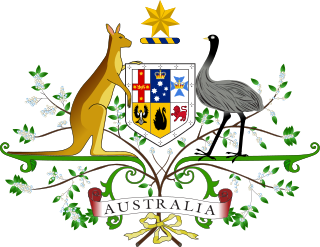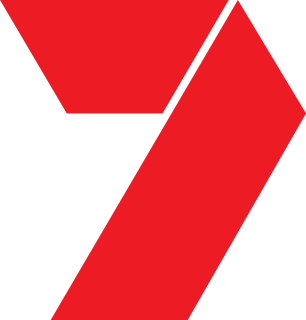
Freeview is the United Kingdom's digital terrestrial television platform. It is operated by DTV Services Ltd, a joint venture between the BBC, ITV, Channel 4, Sky and transmitter operator Arqiva. It was launched in 2002, taking over the licence from ITV Digital which collapsed that year. The service provides consumer access via an aerial to the seven DTT multiplexes covering the United Kingdom. As of July 2020, it had some 85 TV channels, 26 digital radio channels, 10 HD channels, six text services, 11 streamed channels, and one interactive channel.

Digital Video Broadcasting (DVB) is a set of international open standards for digital television. DVB standards are maintained by the DVB Project, an international industry consortium, and are published by a Joint Technical Committee (JTC) of the European Telecommunications Standards Institute (ETSI), European Committee for Electrotechnical Standardization (CENELEC) and European Broadcasting Union (EBU).
Digital radio is the use of digital technology to transmit or receive across the radio spectrum. Digital transmission by radio waves includes digital broadcasting, and especially digital audio radio services.
Foxtel^ is an Australian pay television company—operating in cable television, direct broadcast satellite television, and IPTV streaming services. It was formed in April 2018, superseding an earlier company from 1995. The name 'FOXTEL' is a blend of News Corporation's 'Fox' Broadcasting and 'Tel' from Telstra. The name signifies a joint venture established between News Corporation and Telstra, with News Corp being the 65% and Telstra the 35% shareholders respectively.

WIN Television is an Australian television network owned by WIN Corporation that is based in Wollongong, New South Wales. WIN commenced transmissions on 18 March 1962 as a single Wollongong-only station, and has since expanded to 24 owned-and-operated stations with transmissions covering a larger geographical area of Australia than any other television network except for ABC Australia which broadcasts to 44 countries, making it the largest privately owned television network in the world. As a regional broadcaster, WIN currently holds a five year affiliation agreement with metropolitan broadcaster Network 10. They will be returning to the Nine Network from 1 July 2021.
Station identification is the practice of radio or television stations or networks identifying themselves on-air, typically by means of a call sign or brand name. This may be to satisfy requirements of licensing authorities, a form of branding or a combination of both. As such, it is closely related to production logos, used in television and cinema alike.
Free-to-air (FTA) services are television (TV) and radio services broadcast in clear (unencrypted) form, allowing any person with the appropriate receiving equipment to receive the signal and view or listen to the content without requiring a subscription, other ongoing cost, or one-off fee. In the traditional sense, this is carried on terrestrial radio signals and received with an antenna.

Television in Australia began experimentally as early as 1929 in Melbourne with radio stations 3DB and 3UZ, and 2UE in Sydney, using the Radiovision system by Gilbert Miles and Donald McDonald, and later from other locations, such as Brisbane in 1934.
Malaysian television broadcasting was introduced on 28 December 1963. Colour television was introduced on 28 December 1978. Full-time colour transmissions were officially inaugurated on New Year's Day 1982. There are currently 8 national free-to-air terrestrial television stations in Malaysia and 2 national pay subscription television stations in Malaysia.
Datacasting is the broadcasting of data over a wide area via radio waves. It most often refers to supplemental information sent by television stations along with digital terrestrial television, but may also be applied to digital signals on analog TV or radio. It generally does not apply to data which is inherent to the medium, such as PSIP data which defines virtual channels for DTT or direct broadcast satellite systems; or to things like cable modem or satellite modem, which use a completely separate channel for data.
In most telecommunications organizations, a virtual channel is a method of remapping the program number as used in H.222 Program Association Tables and Program Mapping Tables to a channel number that can be entered via digits on a receiver's remote control.
Digital terrestrial television in Australia commenced on 1 January 2001 in Sydney, Melbourne, Brisbane, Adelaide and Perth using DVB-T standards. The phase out of analogue PAL transmissions began on 30 June 2010 and was completed by 10 December 2013.
In broadcasting, digital subchannels are a method of transmitting more than one independent program stream simultaneously from the same digital radio or television station on the same radio frequency channel. This is done by using data compression techniques to reduce the size of each individual program stream, and multiplexing to combine them into a single signal. The practice is sometimes called "multicasting".
ABC TV, formerly known as The ABC National Television Service or ABC Television from 1956 until 2008, and as ABC1 from 2008 until 2014, is a national public television network in Australia. Launched on 5 November 1956 it is the responsibility of the ABC's television division, and is available nationally. The ABC's headquarters is in Ultimo, an inner-city suburb of Sydney, New South Wales.
ABC Television is the national television network of the Australian Broadcasting Corporation launched in 1956. As a public broadcaster, the ABC provides four non-commercial channels within Australia, and ABC Australia, an advertiser-supported satellite channel partially funded by the Department of Foreign Affairs and Trade. ABC is one of five main free-to-air networks in Australia.

The Seven Guide was a datacast channel provided by the Seven Network to digital television viewers in Australia. It began broadcasting on 6 September 2002. The channel was broadcast 24 hours a day. The channel was available to viewers on channel 77 in Sydney, Melbourne, Brisbane, Adelaide and Perth. The guide was also modified for state-based news and program promotions. The guide initially launched in Sydney and Melbourne, with Brisbane, Adelaide and Perth launching the guide later in 2003. The channel ceased broadcasting on 4 July 2008.

The Nine Guide was a television data cast channel provided by the Nine Network to digital television viewers in Australia. It began broadcasting on 21 August 2001 in Sydney broadcasting 24 hours a day The channel expanded to fellow Nine Network stations in Melbourne and Brisbane in 2002. The Guide was modified for state-based programming and program promotions.

The Ten Guide was a television channel provided by Network Ten to digital television viewers in Australia. It began broadcasting on 1 July 2004 network-wide simultaneously on Network Ten in Sydney, Melbourne, Brisbane, Adelaide, and Perth and was broadcast 24 hours per day. The channel ceased broadcasting on 20 November 2007.
Freeview is the brand name of the digital terrestrial television platform in Australia intended to bring all of free-to-air (FTA) broadcasters onto a consistent marketing platform, to compete against subscription television, in particular Foxtel. The strategy coincided with the expansion to 3 digital channels for each FTA network and the planned phasing out of analog television in Australia. Important services from Freeview include its free-to-air channels with an enhanced EPG across all channels. Freeview also certifies televisions, set-top boxes and personal video recorders (PVR) which meet its standards.

ABC Kids is the Australian Broadcasting Corporation's part-time channel, broadcasting shows between the hours of 5 am and 7:30 pm for children 3 and under in each local Australian channel. It shares the same bandwidth as ABC TV Plus which broadcasts outside ABC Kids' scheduled hours and supplements the flagship ABC TV channel with extra adult-oriented programming.









